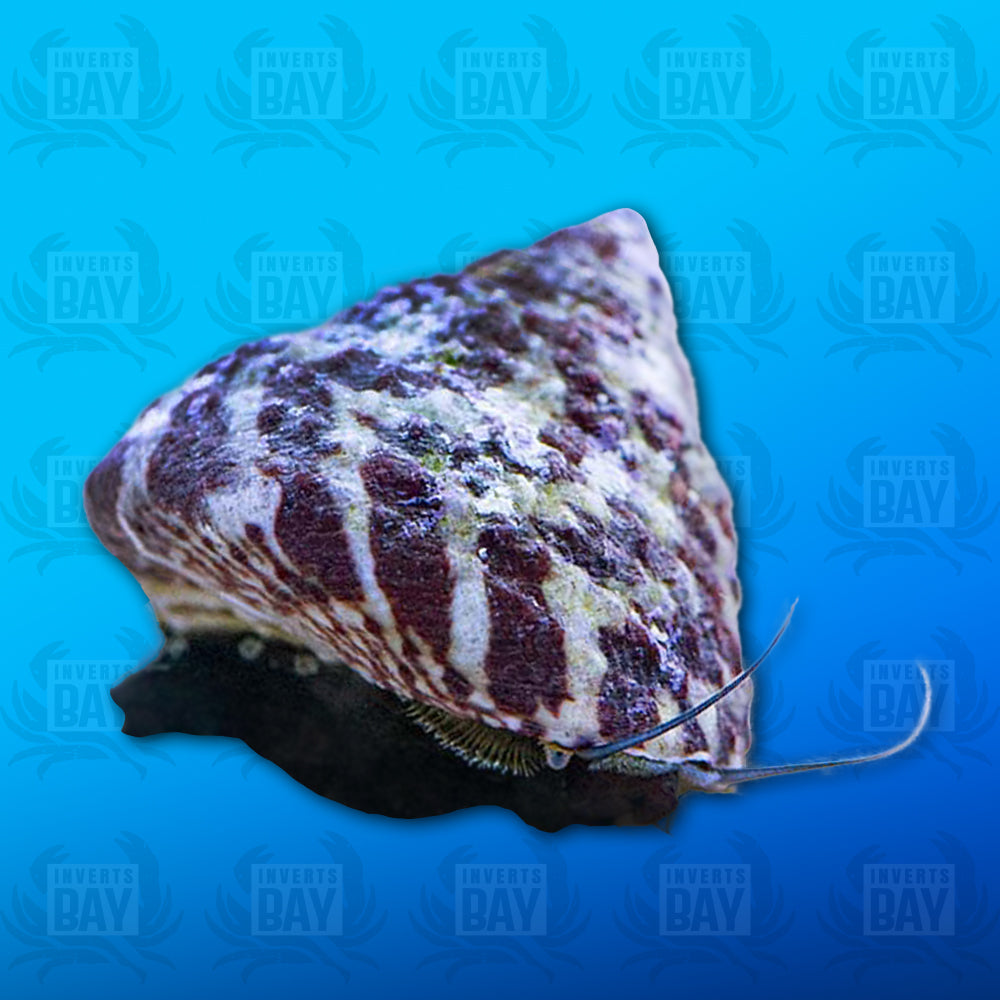(!) Online orders may be adjusted or canceled in the event of pricing errors or unavailable items.
1
/
de
1
Inverts Bay
Troca
Troca
Prix habituel
$4.00 CAD
Prix habituel
$7.00 CAD
Prix promotionnel
$4.00 CAD
Prix unitaire
/
par
Frais d'expédition calculés à l'étape de paiement.
Impossible de charger la disponibilité du service de retrait
The Trochus Snail (Trochus spp.), commonly known as the Banded Trochus Snail, is a popular marine invertebrate among aquarists due to its effective algae-grazing abilities and ease of care. Its distinctive conical shell and beneficial role in maintaining tank cleanliness make it a valuable addition to reef aquariums.
Essential Information:
- Common Names: Banded Trochus Snail, Turban Snail, Top Shell Snail
- Scientific Name: Trochus spp.
- Family: Trochidae
- Origin/Habitat: Native to the Indo-Pacific region, inhabiting coral reefs and rocky substrates.
- Maximum Size: Typically grows up to 3 inches (7.6 cm) in diameter.
- Lifespan: Generally lives between 2 to 5 years in captivity.
- Level of Difficulty: Easy; suitable for aquarists of all experience levels.
- Reef Safe: Yes; they are considered reef-safe and beneficial for algae control.
Appearance & Physical Traits:
- Coloration & Pattern: Features a thick, conical shell with coloration ranging from creamy-white with reddish-brown patches to purplish, greenish, or brown hues. The shell consists of up to 10 whorls spiraling around the central axis.
- Body Shape & Structure: The shell has a distinctive conical shape with a sharp point and flat base, setting it apart from other snail species.
Habitat & Environmental Needs:
- Minimum Tank Size: A minimum of 10 gallons (38 liters) is recommended per snail to ensure adequate food supply and space.
- Water Temperature: Ideal range is between 74–79°F (23–26°C).
- pH Level: Maintain a pH between 8.1 and 8.4.
- Specific Gravity: Optimal specific gravity ranges from 1.023 to 1.025.
- Aquascape: Provide ample live rock and sandy substrate to offer grazing surfaces and hiding spots. Ensure the tank is well-established with sufficient algae growth to support their dietary needs.
Diet & Feeding:
- Diet Type: Herbivorous grazer
- Preferred Foods: Primarily consumes various forms of algae, including diatoms, film algae, and cyanobacteria. In well-established tanks, they often find enough natural food sources. If algae levels are low, supplementation with algae wafers or blanched vegetables can be provided.
- Feeding Frequency: Generally self-sufficient in established tanks; monitor their condition and supplement as needed.
Behavior & Compatibility:
- Temperament: Peaceful and non-aggressive
- Social Behavior: Solitary; does not require companions but can coexist with other peaceful tank inhabitants.
- Tank Mate Compatibility: Compatible with most reef-safe fish and invertebrates. Avoid housing with predatory species that may harm them.
- Activity Level: Primarily nocturnal but may also be active during daylight hours.
Care Considerations & Additional Notes:
- Ease of Care: Hardy and adaptable, making them suitable for beginners. They can right themselves if overturned, a trait not common in all snail species.
- Special Requirements: Ensure stable water parameters and avoid sudden changes in salinity or temperature. Acclimate slowly when introducing to a new tank to prevent shock.
- Breeding Info: Breeding in captivity is uncommon but possible. They are broadcast spawners, releasing eggs and sperm into the water column. Successful breeding may require specific conditions, such as water quality and the presence of both sexes.
- Additional Notes: Regular monitoring of water quality is essential. Ensure there is sufficient algae growth to support their dietary needs, or be prepared to provide supplemental feeding.
Share

